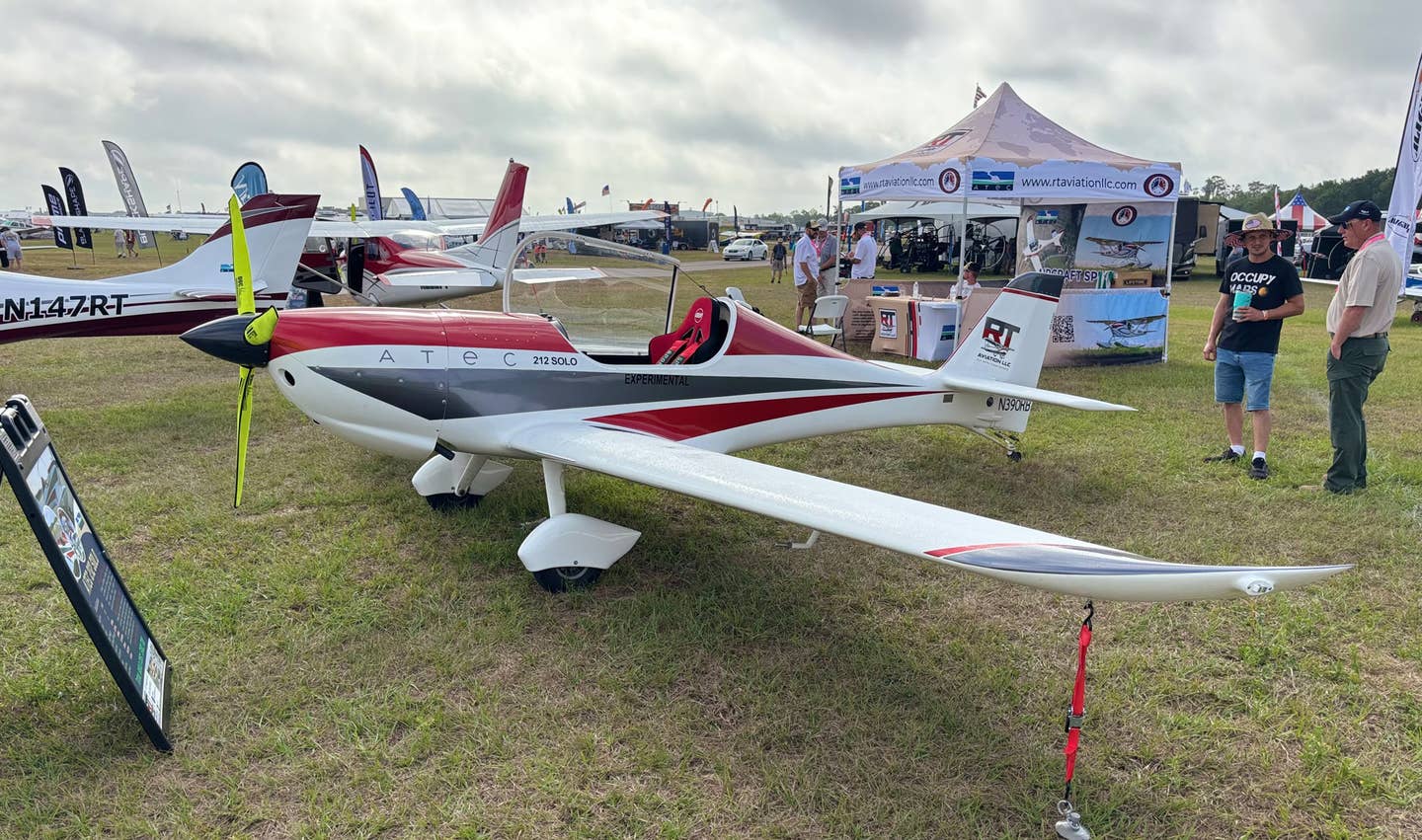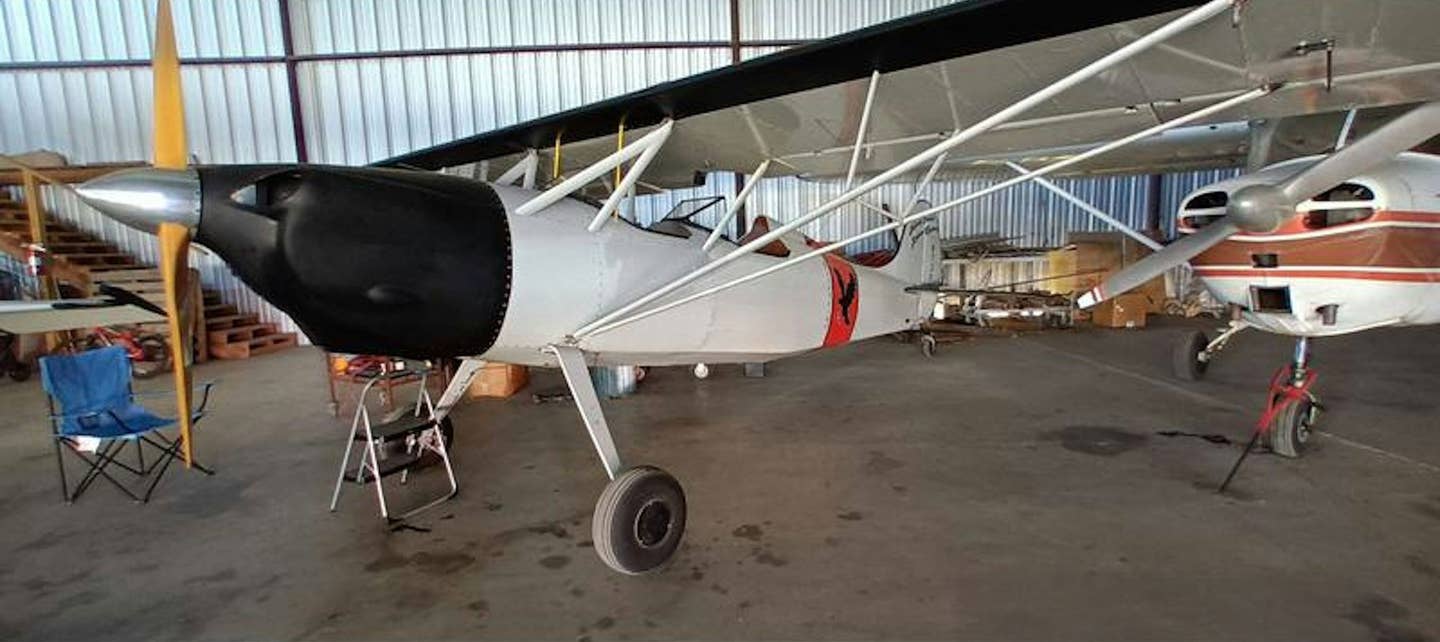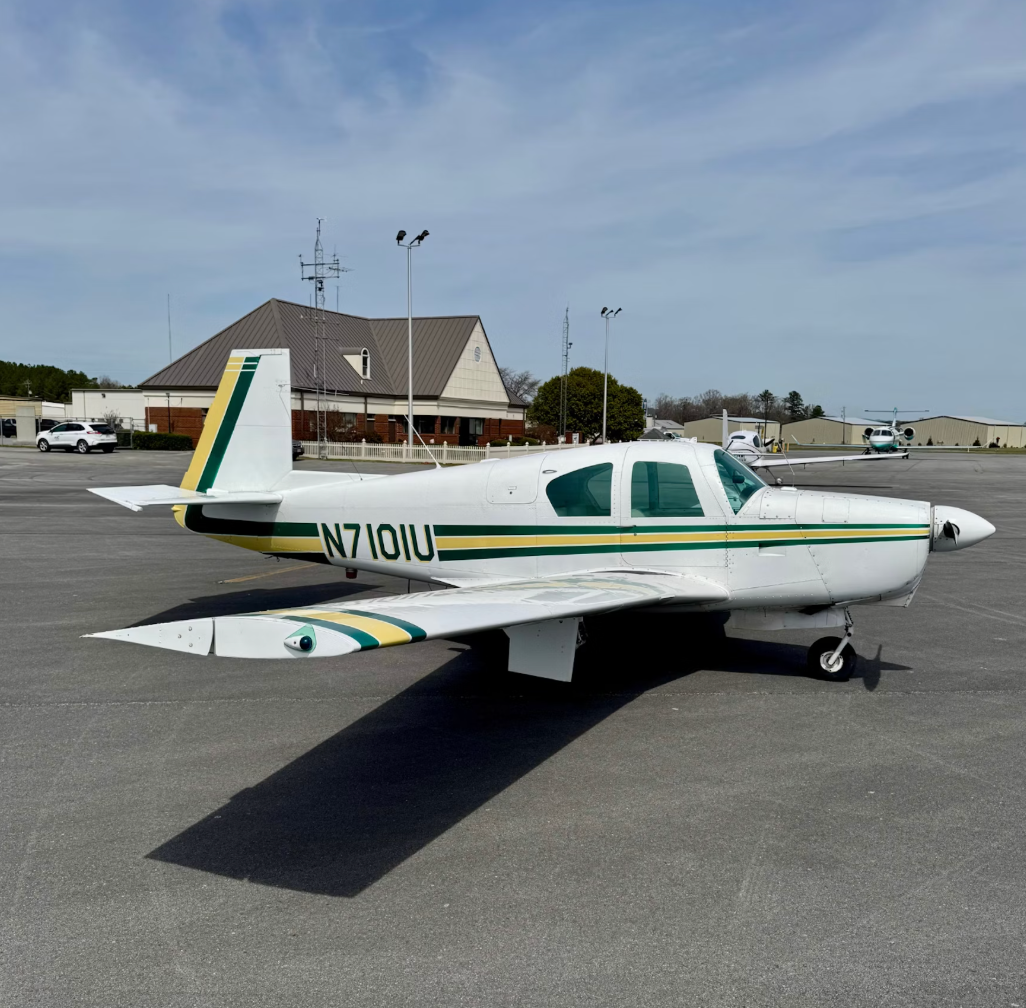If you're in the market for a used Cirrus piston single, it can be daunting to decide which Generation (or Segment) fits your mission and budget: SR20 (200 or 215 HP), SR22 (310 HP), SR22TN (310 HP Turbo Normalized) or the top-of-the-line SR22T (315 HP Turbocharged). Cirrus Aircraft has only been delivering aircraft since 1999, and every single Cirrus ever produced is installed with a whole air-craft parachute, which the company calls the Cirrus Airframe Parachute System (CAPS). The innovation doesn't stop there. Over the 20 years it has been building its SR20 and SR22 singles, Cirrus made hundreds of major and minor improvements. CAPS has been standard on all models, and it remains the most innovative and unique feature of a Cirrus Aircraft.
Cirrus Aircraft periodically introduced a new Generation when a significant number of improvements came out. The original version wasn't a G1 until the G2 was introduced in 2004. The G3 launched in mid-2007 and skipped to G5 in 2013. The current generation is a G6. So, where did the G4 go? It was skipped as the number 4 is considered unlucky in the Asian culture because it sounds a lot like the Chinese word for "death," and as a result, Chinese buildings often lack a fourth floor (just as American buildings sometimes skip the 13th). Brokers will often refer to the 2009-2012 segments as "G4" because when the Flight Into Known Icing (FIKI) was introduced in 2009, it proved to be a huge market differentiator. The SR22 has been the world's bestselling aircraft for 17 years, and over 8,000 piston SR-series aircraft have been produced.
On the resale market, which is the hottest it has ever been, over 1,000 Cirruses have exchanged ownership in the past 12 months. The normal inventory of pre-owned Cirruses for sale at any one point in time is typically about 250 out of a fleet size of 6,000 aircraft (in North America), equating to roughly 4% of the fleet for sale. As with many other sectors of the economy, supply has dwindled significantly due to massive demand, with current listings (at the time of this writing) at 77 units, and about half of those are "under contract" awaiting prebuy evaluations prior to closing. This equates to less than 1% of the fleet being available for purchase, so if you see what you want, make an offer immediately contingent on a prebuy. The key is knowing what you want ahead of time. Read on.
The following is a "CliffsNotes" version of the different generations of the piston models and their current values and availabilities. Aerista is a platinum preowned partner of Cirrus Aircraft and has detailed guides for the changes by model and the original pricing. Aerista's proprietary pricing database, Aeristametrics, tracks thousands of SR and SF asking prices and closing prices and developed adjustment factors for about 20 parameters other than airframe and engine hours, so Aeristametrics can determine market values in each segment of the market with great accuracy. Sellers, lenders and acquisition clients rely on Aeristametrics to correctly value aircraft in the current market.
G1 (1999-2003)
The SR20 was first delivered in July 1999, and the total production that year was only nine aircraft. This grew to 90 in 2000, 270 in 2001, 350 in 2002, and 450 in 2003.
The delivery of the SR20 in 1999 brought much fanfare due to introduction, standardization and integration of the airframe parachute, glass panel, graphical GPS/nav/comm and sophisticated autopilot.
Avionics (standard and/or options)
Six-pack
Digital MFD
GNS430 (or 420 or 250) Multifunction Navigator/digital radio
Autopilot
Stec 55 (or 30)
Ice Protection
TKS (SR22 only)
The SR22, with its 310-hp engine, was first delivered in July 2001. Inadvertant Ice Protection (TKS) was optional in 2002. The first Avidyne Primary Flight Display (PFD) was introduced in March 2003.
The first special-edition Cirrus was a run of 100 Centennial Edition SR22s in 2003 with dual glass, TKS and a special linen white paint and tan interior to commemorate the 100th anniversary of the Wright brothers' first flight.
Current G1 prices:
SR20 $180K to $220K with average of $200K
SR22 $210K to $350K with average of $300K
SR22 Centennial Edition $245K to $300K with average of $290K
G2 (2004-2007)
The Generation 2, introduced in early 2004, was primarily a new fuselage design for Cirrus. Based on dynamic crash testing done at NASA Langley, the old 90-degree firewall configuration, which had been and is largely still standard to every other aircraft manufacturer, was changed to a 30-degree bevel to allow the fuselage to slide forward on a crash landing instead of digging in. This also reduced cooling drag through the engine compartment and slightly increased the cruise speed. With the new fuselage, access to the CAPS compartment was designed through the baggage bulkhead, eliminating the requirement on the G1 CAPS repacks to pop a cover off, rebonding the cover on and doing touch-up painting every 10 years.
Additional avionics upgrades became available to the Avidyne MFD, including XM Weather and Audio, Enhanced Terrain Avoidance Warning System (ETAWS) and CMAX Approach Plates in 2004. The PFD gained a flight director, and airbag seatbelts became available in 2005. Factory air conditioning and semi-portable oxygen became popular options in 2006. The six-point engine mount reducing engine vibration became standard. Factory installation of the Tornado Alley STC for its turbo-normalizing (TN) system with dual turbos and intercoolers also became an option in late 2006.
Cirrus produced its second special edition with a limited production of 50 Signature Edition SR22s with racing stripes on an all-sterling or white paint scheme. It was completed with the signatures of Alan and Dale Klapmeier, co-founders of Cirrus Design. This also offered the factory installation of the Tornado Alley STC for their TN system with dual turbos and intercoolers.
Current G2 prices:
SR20 $220K to $260K with average of $230K
SR22 $280K to $600K with average of $340K
SR22TN $250K to $400K with average of $340K
G3 (2007-2012, sorta)
In April 2007, the Generation 3 was introduced with a new wing. A stronger and lighter carbon fiber spar expanded fuel capacity from 81 to 92 gallons. Spar length increased wingtip to wingtip, and the fresh air inlet was moved from the leading edge of the wing to the cowling. This allowed for about 10 more feet of TKS panel on the inadvertent ice protection panels. The wing dihedral grew to allow for removal of the rudder-aileron interconnect. The landing gear came closer, raising the fuselage 3 inches and the wingtips 5 inches.
During this time, Cirrus engineers had been working on three new avionics systems for certification; Avidyne R9, L3 Smartdeck and Cirrus Perspective by Garmin. The recession of 2008 started, and Cirrus could only support one, so in May 2008, Cirrus offered the option of Cirrus Perspective by Garmin, and it became standard in 2009 due to the high demand. This included a digital autopilot, yaw damper, synthetic vision and a highly redundant electrical system. Later, in November 2008, the Enhanced Vision System (mixing Infrared and low light into a display on the MFD) became an option.
Current G3 prices
(on average, Cirrus Perspective avionics carries $50K premium over Avidyne):
SR20 (2007-2016) $210K to $420K with average of $350K
SR22 (2007-2008) $340K to $520K with average of $360K
SR22TN (2007-2008) $300K to $495K with average of $390K
G4
After three years of testing, FIKI became certified and offered as an option in January of 2009. The fluid capacity doubled from 4 gallons to 8 gallons, dual pumps were installed, the vertical tail and elevator horns were protected, the stall warning was heated, and the windshield had dedicated sprayers. This was such a game-changer in the capability of the Cirrus that brokers, responding to the way buyers hone the search, often define this segment as a G4.
Factory Turbocharging
In 2010, Cirrus installed the Continental TSIO-550K to create the SR22T. This was a newly developed engine by Teledyne Continental Motors, putting out 315-hp. It was also quieter due to a max 2,500 RPM setting. Cirrus designed an oleo nose strut also to dampen nose landing gear shocks. The Garmin avionics now incorporated Electronic Stability Protection (ESP) Autopilot stall protection, hypoxia detection and auto descent, among other enhancements.
In 2011, Cirrus produced 10 commemorative edition aircraft to celebrate 10 years of the SR22 series, and also the 5,000th Cirrus was delivered.
ADS-B Out became standard in 2011, and ADS-B In became available in 2012. One of the most-desired improvements for passengers came in January 2012 with the 60/40 flex seating, the slightly widened seating area allowing for three smaller passengers in the back seats. The seats were able to recline and had automotive-type seatbelts. Lastly, the seats had the "LATCH" system to allow easy installation of infant car seats.
Current 2009-2012 "G4" Prices:
SR22 $390K to $540K with average of $480K
SR22T $400K to $585K with average of $510K
G5
In 2013, Cirrus introduced the G5 SR22 model, which featured an increase of 200 pounds in useful load. Other than FIKI, no improvement was better received. After years of design and testing of a larger canopy, the CAPS system incorporated a larger, more powerful rocket with electronic versus percussion ignition, allowing the system to handle 3,600 pounds. The spar and landing gear also were beefed up to support the greater weight. The redesign also allowed for deploying 50% flaps at 150 KIAS instead of the previous limit of 119 KIAS. Pilots flying into Class B airports appreciated this when they were mixed in with jet traffic and asked to "keep their speed up."
The 2014 Cirrus offered the new Beringer wheels and brakes. The brakes were higher temperature tolerant, lighter weight and had greater stopping power. The tires were now tubeless, removing one rare but frustrating source of flat tires in the field.
The digital 4-in-1 standby gauges, four USB outlets and enhanced high UV blocking windows were also introduced in 2015.
After several years of "slam shut"-style automotive doors, the 2016 Cirrus incorporated a positive door latch, virtually eliminating the occasional door pops if improperly closed. This also featured a key fob allowing for remote locking and unlocking of the doors, with the added benefit of turning on convenience lights. Garmin's Flight Stream 210 incorporated two-way interface between an iPad and the Garmin avionics. Angle of attack was now displayed on the PFD of FIKI aircraft.
G6
By 2017, the basic Garmin G1000 architecture in Cirrus Perspective was more than a decade old and at the limits of its growth. Generation 6 introduced Cirrus Perspective+ by Garmin, which used the new Garmin NXi technology. The new hardware was able to process data 10X faster than the previous G1000 units and allow for more functions, detail and capability. For example, VFR Sectionals and IFR Enroute Charts could be displayed on the MFD, and panning and zooming were effortless. The keyboard changed from alphanumeric to a true QWERTY layout. The dual Aircraft Heading Reference Systems (AHRS) and Air Data Computers (ADC) were integrated into a dual ADAHRS. The XM Weather was animated, and a graphical weight and balance calculator was on the MFD at startup. Surface Watch gave aural and visual runway warnings. Flight Stream 510 allowed use of the Garmin database concierge for updates.
Pilot and passengers alike admired the new Spectra LED wingtip lighting and wigwag features in flight.
G6 SR20
The SR20 also enjoyed an important change in 2017, as Cirrus swapped the six-cylinder 200-hp Continental IO-360ES for the four-cylinder 215-hp Lycoming IO-390. This gave the SR20 a max weight increase of 100 pounds, to 3,150 pounds. Combined with the lighter weight of the Lycoming engine and composite propellor, the useful load increased by 150 pounds.
The G6 was further improved in 2018 with multipane MFD functionality, the "Green Donut" Vref speed cue on the PFD for approach speed management and Auto Level if the pilot strays outside the ESP envelope for longer than 20 seconds.
2019 introduced the 600-foot "CAPS Available" callout on takeoff, GPS above ground level altitude readouts and a glide range ring. The Cirrus Perspective+ by Garmin also allowed numerous other benefits in the avionics interface and information.
The highlight of the 2020 model year was the Cirrus IQ, which allows the pilot to use an app to check the fuel, battery and TKS levels of the aircraft right from their phone. An optional 4-blade SR22T propeller from Hartzell also became available.
Current G6 Prices:
SR20 $450K to $595K with average of $570K
SR22 $685K to $950K with average of $790K
SR22T $810K to $1.15MM with average of $880K
While the Cirrus SR market was hot prior to the COVID era, the pandemic gave thousands of business owners and professionals more control of their time and added incentive to fly their own planes. Many took advantage by learning to fly. Many of them then got into aircraft ownership with a preowned Cirrus G1 to G3. This allowed the sellers of those aircraft to move into a G5, G6 or order a new Cirrus. Because of the dozens of major improvements and hundreds of un-
seen design improvements, many Cirrus owners seem to upgrade a generation or a model every two to three years, and this resale value remains strong for years to come. It will take years to return to a normal availability of 4% to 5% on the market from the current 1%, so if you are looking at preowned, now is as good a time as any to enter the market.
Safe flying!

Subscribe to Our Newsletter
Get the latest Plane & Pilot Magazine stories delivered directly to your inbox






